Disclosure: Meeple Mountain received a free copy of this product in exchange for an honest, unbiased review. This review is not intended to be an endorsement.
Critical Role is the biggest name in the Dungeons & Dragons actual play scene, and Darrington Press is the publishing label for all their tabletop gaming offerings.The Uk’otoa board game was the first published game under this brand, named after the patron of one of Campaign Two’s characters, Fjord. Although I haven’t watched or listened to much of Critical Role—it’s such a major time investment—I was still drawn towards Uk’otoa knowing how much effort and care goes into the production of their ventures.
Uk’otoa Overview
Uk’otoa, a monstrous beast of the sea, has obliterated your ship leaving all its sailors in a mad scramble to survive atop the floating wreckage. You will be affiliated with two factions, and if sailors of your faction(s) are the only sailors remaining, you win the game. In this semi-cooperative game, each player is sharing factions with their neighbors, but eventually there will be some level of mutiny amongst the group. It’s only a matter of time.
The opening of the game consists of two preparatory phases. First, players will place the individual ship hexes to form the play area, with the main requirement being that each subsequent tile must point to the previously placed tile. This creates a variable board each time, although the recommended starting arrangement seems to balance the game well enough.
In the second preparation phase, the Uk’otoa miniature is positioned on the final hex that was placed. If the board is set up correctly, each hex only points to a single adjacent hex, creating the path that Uk’otoa will take over the course of the game.
Each player then takes turns placing one sailor on an empty hex to fill up the board. In the standard game, players don’t know which factions they’re aligned with so this becomes mostly randomized. There is a variant where players know their faction ahead of time, at which point this would have a strategic structure centered around the final tile. If factions haven’t been declared yet, assign them, and then the game begins in earnest.
On their turn, a player will start by optionally advancing Uk’otoa. When Uk’otoa advances, he devours any sailor on that hex, removing them permanently from the game. Additionally, the hex that Uk’otoa moves from is also returned to the box.
After deciding if Uk’otoa should move, the active player draws two cards from the deck before their action phase. Then, the player can play a single card and carry out its effect. However, a player could play two duplicate cards together, allowing them to play another card. In this way, a player could activate the effects of up to four cards in a turn if they had five cards in-hand to start their turn. Talk about a combo!
There are five different card types in the game. Advance Uk’otoa moves the Uk’otoa miniature forward the specified number of spaces. Unleash a Tentacle removes sailors in a straight line of hexes corresponding to the number indicated on the card. Run cards allow you to move sailors through empty hexes to avoid the oncoming beast. Push cards act similarly to Run cards, but allow you to move sailors of your color and any sailors that get in the way of that movement. Lastly, Take them Instead cards swap the positions of two sailors.
Last faction(s) standing wins the game!
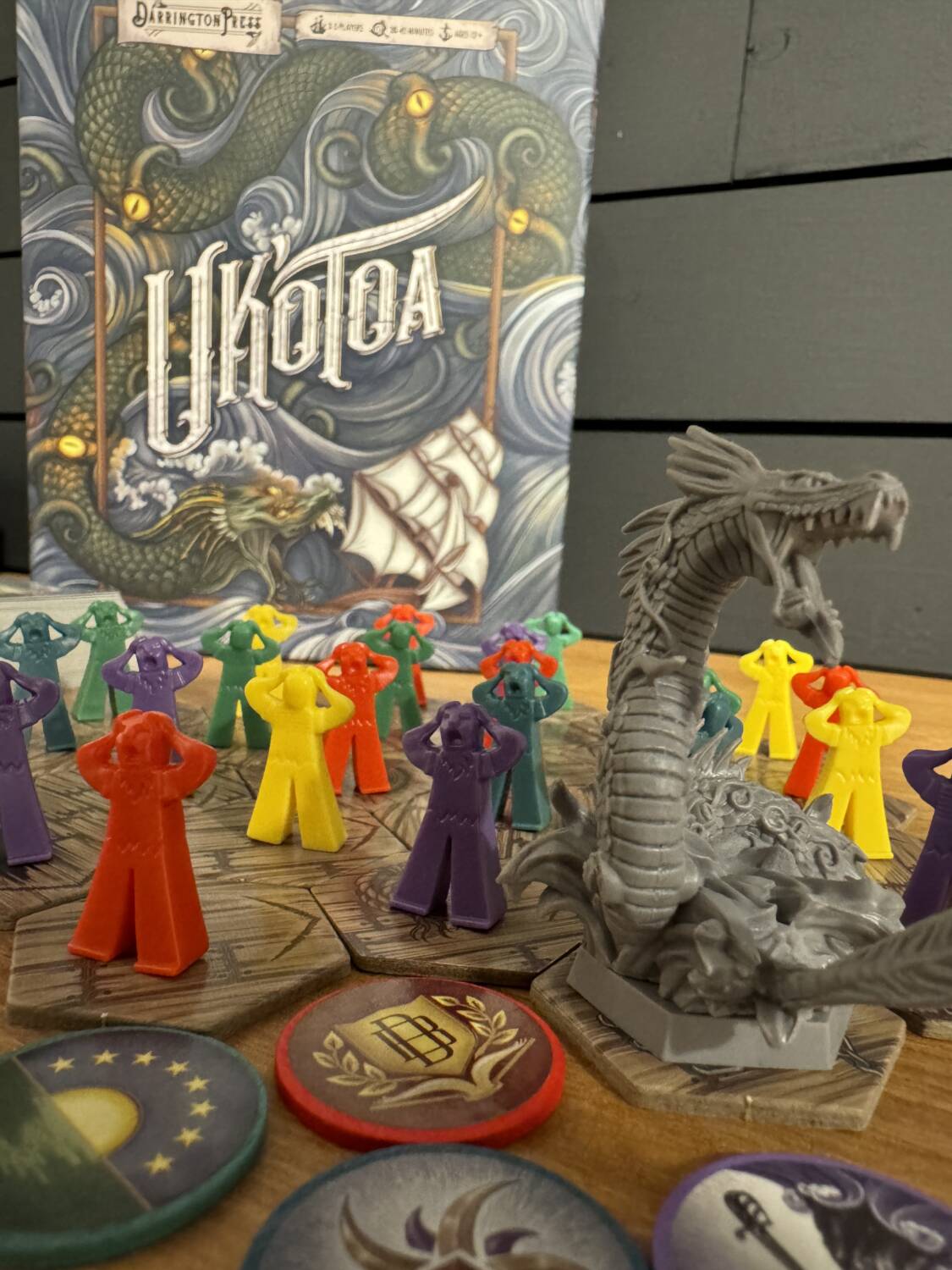
Uk’otoa: All About the Center
You don’t need to know a lick about Critical Role lore to play this game. In fact, the blurb about each faction in the rulebook might as well not even exist because it has no bearing on the gameplay. You can bet your bottom dubloon that I didn’t refer to the purple sailors as ‘The Revelry’ a single time during any of our plays.
The decision space in Uk’otoa is interesting because the game state actually limits which cards are viable plays from your hand. If there aren’t any empty spaces neighboring your factions’ sailors, then you won’t be able to play Run cards at all. Generally speaking, the board feels very clogged up at the beginning of the game, especially with a full table of five players. The only action that frees up meaningful decision space is when an Unleash a Tentacle card is played in a direction other than Uk’otoa’s planned route.
Over time, it became clear that saving aligned sailors from Uk’otoa’s immediate vicinity hardly mattered in the grand scheme of things. Since your goal is to have only sailors of your factions remaining—and because you know exactly the path that the leviathan is taking—it is much more profitable to get as many of your sailors towards the final hex as possible. It doesn’t matter how many of your sailors survive; you just need one.
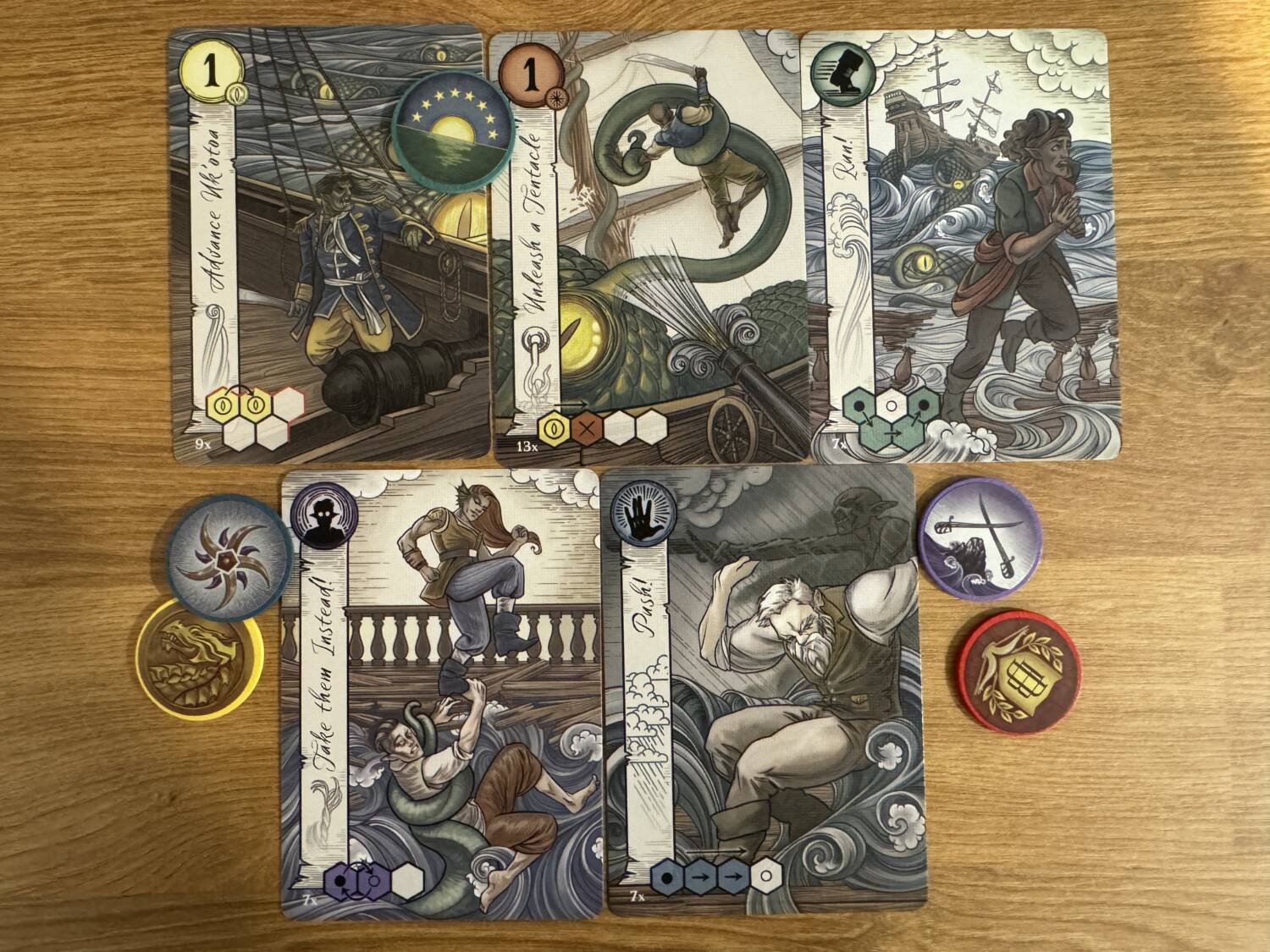
There are a few aspects of the rules that don’t make much sense to me. For example, you’re supposed to place the faction discs facedown next to the players and then reveal them once the sailors are placed. However, the discs feature their sailors’ color on both sides, so that’s a bit of a head-scratcher. There’s also a point where the rules say to place all of the sailors on their faction’s disc, but the disc is the size of a quarter. It makes me think there was a disconnect between decisions on the final components after the rulebook was already completed.
Speaking of components, I also found that the card name font is too thin, making the cursive less legible than it should be. The meeples themselves are made of lightweight plastic, sculpted with flaring pants that would make them the talk of any 70s sitcom. With an Uk’otoa miniature that looks so incredible, it seems like these meeples were a cost-reduction effort that cheapens the overall production. I’d much prefer something along the lines of the meeples from Tenpenny Parks.
On top of the meeples being susceptible to falling over at the slightest graze, the hexes can also be easily knocked out of alignment without much effort. I actually like the way the board is initially set up, and the individual hexes are what make that achievable, but I found myself constantly readjusting them back to their proper positions.
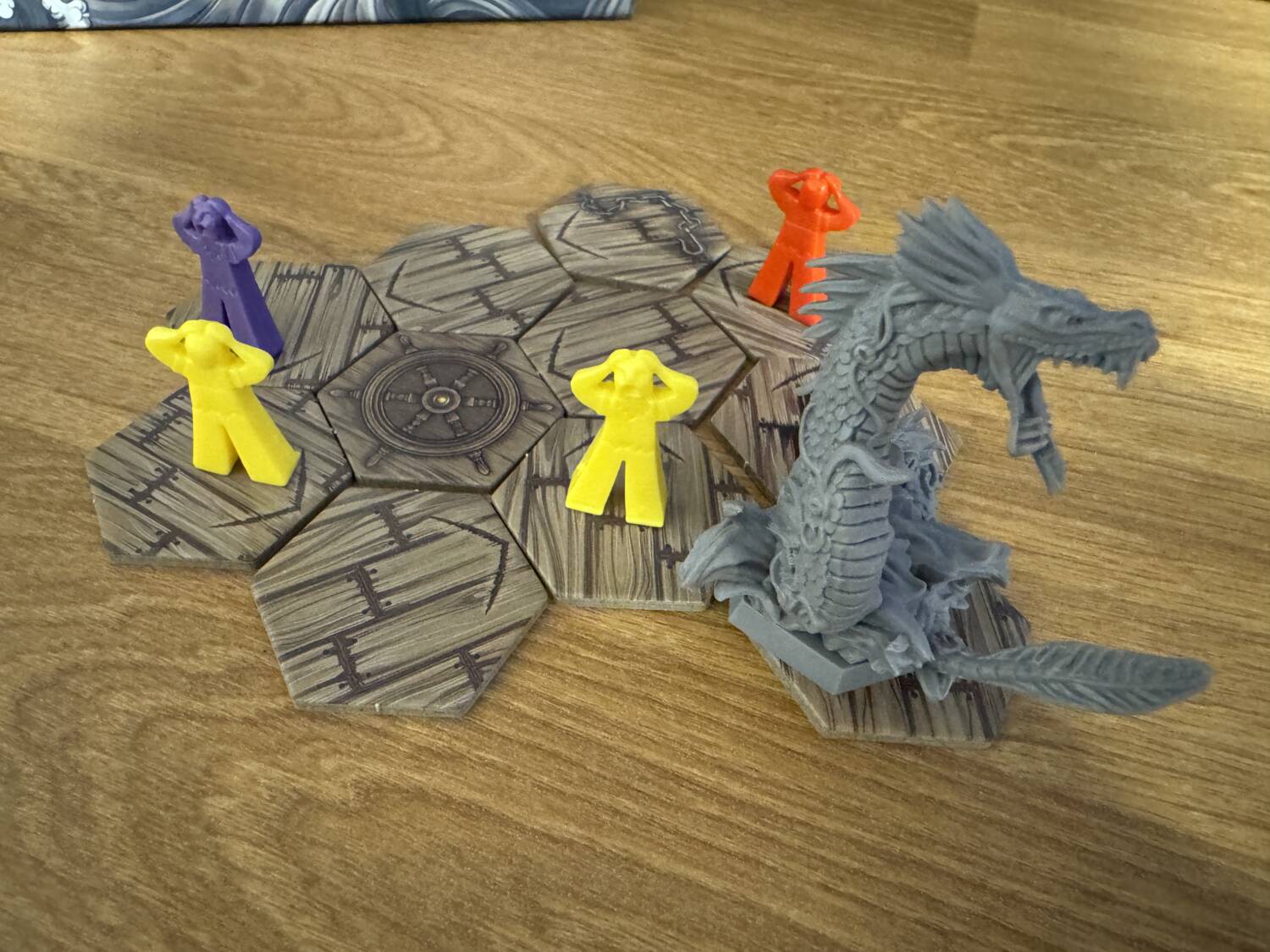
Uk’otoa: Into the Drink
The cooperative aspect of Uk’otoa brings the overall experience up a notch because you have to consider how your ‘allies’ would be impacted by your actions. It’s also nice to know that there are other players who have half your back, albeit temporarily. If everybody was in sole control of a single faction, the actions would be entirely too limiting and gameplay would suffer.
Much of the game feels like it’s just posturing along a programmed route, with tension ratcheting up only towards the end of the game. After all, what do I care if a couple sailors get sent to Davy Jones’ Locker so long as I have some standing when all is said and done? It reminds me of that adage that says how you don’t need to outrun the bear, you just need to outrun everybody else.
If you play Uk’otoa with three or four players, there’s more room for movement and actions. I would have included rules for a variable number of tiles depending on the number of players and included some extra tiles in the box for games with five. Optionally, maybe removing two sailors per color would create a better experience if you have a full table.
Overall, Uk’otoa is a game that doesn’t give me much to enjoy at its max player count and the game is much more interesting if there’s some space to maneuver. Even still, it’s hard to overlook the component quality of the meeples, even at a $30 price point.
Although the concept of the game is interesting, Uk’otoa hasn’t quite found its sea legs.


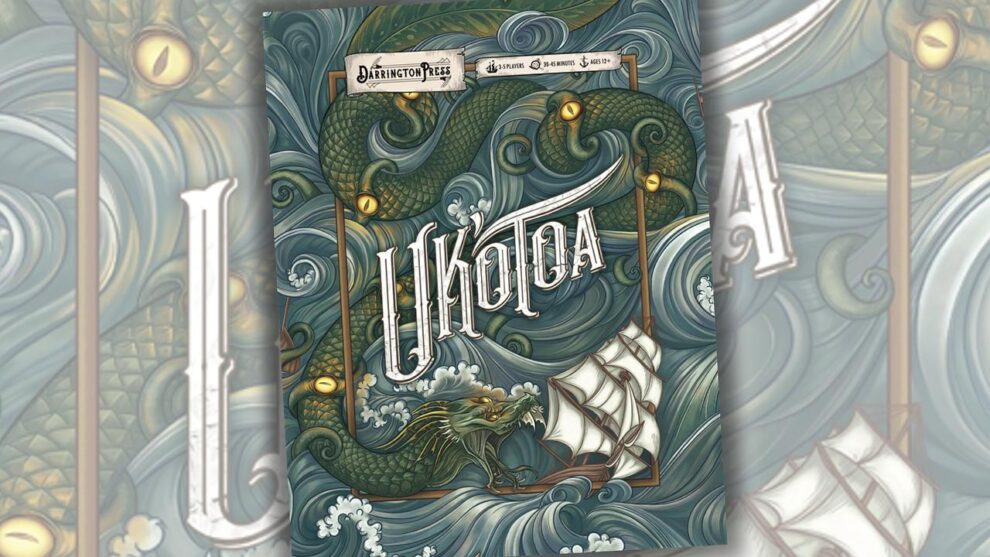
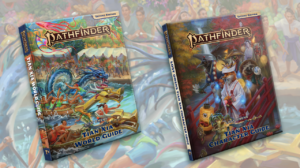

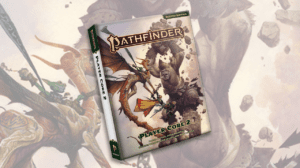
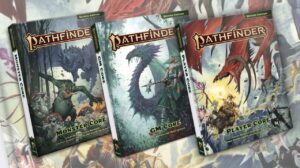




Add Comment